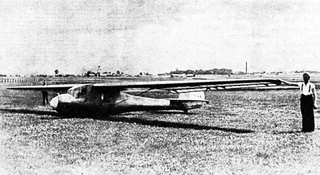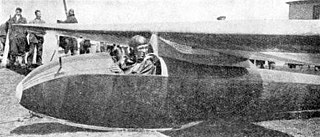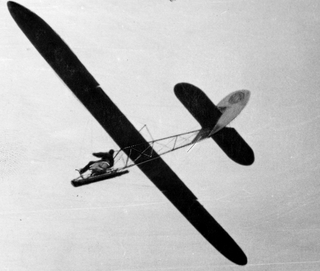The Medwecki and Nowakowski M.N.3 or just M.N.3 was a low-powered, four seat, Polish aircraft flown in 1928. The sole example was modified into a more powerful two-seater which served aeroclubs until World War II.

The Medwecki and Nowakowski M.N.5 was an economical Polish trainer aircraft initially aimed at the club market, though there was also some military interest. It performed well but lacked a constructor after Samolot became insolvent in 1930, so only one was completed.

The Gabriel P 5 was the first nationally developed aircraft to fly in Poland after it became independent in 1918. It was an amateur-built, low-powered, single seat parasol wing machine. Only one was completed.
The Silesia S-4 was a Polish, low-power parasol wing aircraft built in 1925. After an engine change and airframe modifications it became one of the Silesian Aeroclubs fleet. It was lost in a take-off accident in 1931 and was the last Silesia aircraft to fly.

The Działowski D.K.D.1 was the first powered aircraft designed by Stanislaw Działowski. It was a low-power high-wing monoplane with a cabin for one passenger. After attending an aviation exhibition in Warsaw in 1927 it was badly damaged when the engine failed as it left and it did not fly again.
The Sido S.1 was a Polish two seat, parasol wing trainer aircraft, first flown in 1930.
The AMA, named after its designers, was a one-off motor glider built in Poland in the mid-1930s. Its development was abandoned after early tests revealed incurable engine-mounting vibration problems.
The MIP Smyk, MIP from the initials of its Polish designers with Smyk meaning Brat or Kid, was an aerodynamically refined motor glider designed and built at Warsaw Technical University from 1935.
The Medwecki M9 was a 1930s, Polish designed two-seat cabin tourer or trainer aircraft. Only one was completed before the outbreak of World War II.
The ITS-II was a Polish intermediate training glider. Only about five were built as it was soon outclassed by newer Polish aircraft but some were used until 1935. ITS-IIs were used in early training courses on air towing and another gave the first demonstration of glider aerobatics in Poland. It was also used to set one national record.

The Blaicher B.1 was a Polish glider first flown in 1934. It was intended to fill an intermediate trainer role, but offered no advance on existing aircraft and only the prototype was completed.

The Czerwiński CW 7 was a Polish aerobatic glider first flown in 1934. Despite a structural weakness that prevented inverted flight, a small batch of CW 7s were used by several aeroclubs until the start of World War II.

The ITS-IVB was a 1930s Polish two seat research sailplane designed to gather meteorological and airframe stress data. The sole example remained in service up to outbreak of World War II.
The Tarczyński and Stępniewki TS-1/34 Promyk was a Polish short span, high performance sailplane from the mid-1930s and was the first Polish sailplane equipped with flaps. Its construction was delayed by a financial crisis and its development terminated by World War II.

The Blaicher B-38 was a Polish, single seat sailplane completed in 1938. Notable for its use of long span Fowler flaps, its development was ended by the German invasion of Poland in September 1939.

The D.W.L. SG-21 Lwów was a Polish high performance sailplane built for the Polish government. Though both it and a development, the SG-28, were one-offs, they set several national records and led to the batch-produced Warsztaty Szybowcowe SG-3.
The Grzeszczyk SG-3 was a Polish single-seat, high performance sailplane first flown in 1933. Between 1934 and 1937 it was Poland's most successful competitor and record setter; about twenty-five were completed.
The Warsztaty Szybowcowe Sroka, or Kocjan Sroka after its designer, was a Polish intermediate training glider. About sixty were built between 1934 and 1939.
The Warsztaty Szybowcowe Sokół was a 1930s Polish aerobatic sailplane. Ten were built and flown by Polish aeroclubs, participating in national and international events, until the outbreak of the Second World War.

The Naleszkiewicz-Nowotny NN 2 was a Polish primary glider first flown in 1931. An improved version followed in 1932 but only three were built in total.






















